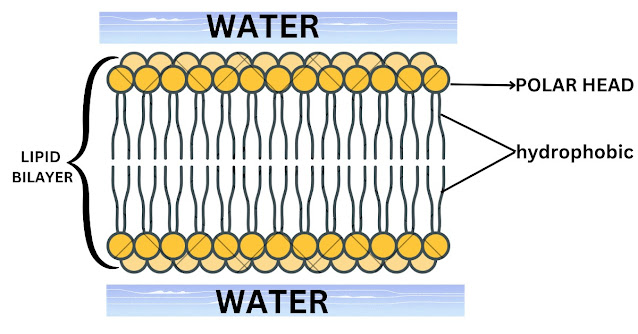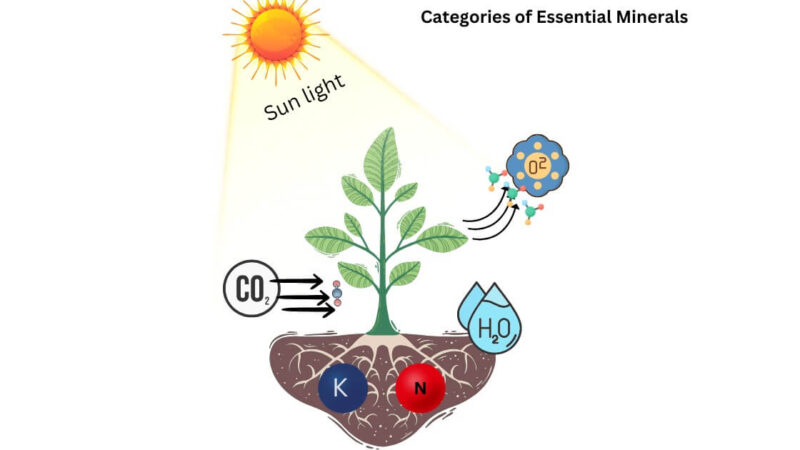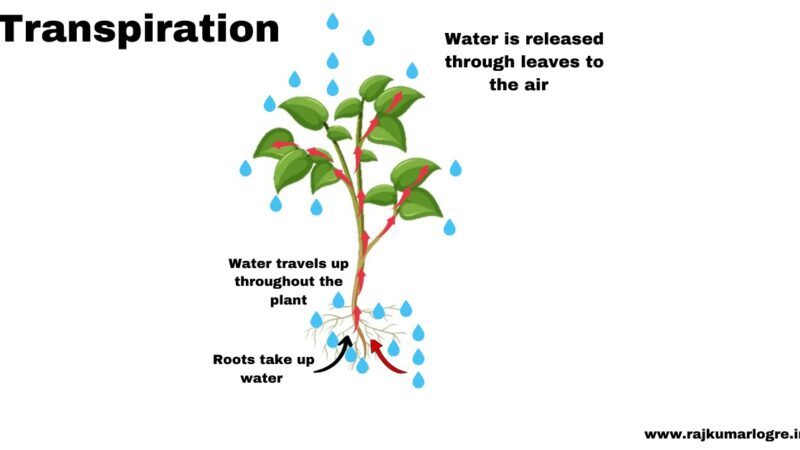The Role of Nitrogen in Plant Growth and Metabolism

Table of Contents
Nitrogen is one of the most critical elements for plant growth and development, serving as a cornerstone of numerous biological processes that sustain life in plants. As a primary component of amino acids, proteins, nucleic acids, and chlorophyll, nitrogen is indispensable for plant metabolism, growth, and reproduction. Understanding its role not only enhances agricultural practices but also informs sustainable farming and environmental conservation efforts. In this blog post, we will explore the multifaceted role of nitrogen in plant growth and metabolism, delving into its biochemical significance, sources, uptake mechanisms, and practical implications for agriculture.
Why Nitrogen Matters to Plants
Nitrogen is a fundamental building block of life, constituting approximately 2-4% of a plant’s dry weight. It is a key component of several essential molecules, including:
- Amino Acids and Proteins: Nitrogen is a core element in amino acids, the building blocks of proteins. Proteins are vital for structural components, enzymes, and metabolic processes that drive growth and development.
- Chlorophyll: Nitrogen is a central atom in the chlorophyll molecule, which enables photosynthesis by capturing light energy. Without sufficient nitrogen, plants cannot produce enough chlorophyll, leading to reduced photosynthetic capacity and stunted growth.
- Nucleic Acids: Nitrogen is a component of DNA and RNA, which govern genetic information and protein synthesis, critical for cell division and reproduction.
- Coenzymes and Secondary Metabolites: Nitrogen is involved in the synthesis of coenzymes like ATP and secondary metabolites, which play roles in energy transfer and defense mechanisms.
A deficiency in nitrogen often manifests as yellowing leaves (chlorosis), stunted growth, and reduced yields, underscoring its importance in plant health.
Nitrogen in Plant Metabolism

Nitrogen is integral to several metabolic pathways that drive plant growth and survival. Let’s explore some of the key processes:
1. Photosynthesis
Nitrogen is a critical component of chlorophyll, the green pigment responsible for absorbing sunlight during photosynthesis. Chlorophyll molecules contain a porphyrin ring with a nitrogen atom at its core, which facilitates the capture of light energy to convert carbon dioxide and water into glucose and oxygen. Nitrogen deficiency directly impairs chlorophyll synthesis, reducing the plant’s ability to photosynthesize and produce energy, which ultimately limits growth.
2. Protein Synthesis
Proteins are the workhorses of plant cells, performing functions ranging from enzymatic catalysis to structural support. Nitrogen is essential for synthesizing amino acids, which are assembled into proteins. These proteins are involved in processes such as cell division, nutrient transport, and stress response. Without adequate nitrogen, protein synthesis is compromised, leading to weaker plants and reduced resilience.
3. Nitrogen Assimilation
Plants absorb nitrogen primarily in the form of nitrate (NO₃⁻) or ammonium (NH₄⁺) from the soil. Once absorbed, nitrogen undergoes assimilation, a process where it is converted into organic compounds. This involves:
- Nitrate Reduction: Nitrate is reduced to nitrite (NO₂⁻) by the enzyme nitrate reductase, and then to ammonium by nitrite reductase.
- Ammonium Assimilation: Ammonium is incorporated into organic molecules, primarily through the glutamine synthetase-glutamate synthase (GS-GOGAT) pathway, forming glutamine and glutamate, which are precursors to other amino acids.
This assimilation process is energy-intensive, requiring ATP and reducing power, highlighting the intricate link between nitrogen metabolism and overall plant energy dynamics.
4. Enzyme Activity
Many enzymes critical to plant metabolism contain nitrogen. For example, ribulose-1,5-bisphosphate carboxylase/oxygenase (RuBisCO), the enzyme responsible for carbon fixation in photosynthesis, is a nitrogen-rich protein. Adequate nitrogen supply ensures that enzymes function optimally, supporting metabolic efficiency.
Sources of Nitrogen for Plants

Plants cannot directly utilize atmospheric nitrogen (N₂), which constitutes about 78% of the Earth’s atmosphere, due to its stable triple bond. Instead, they rely on various sources to obtain usable nitrogen:
- Soil Nitrogen: Nitrogen in the soil exists as organic matter (decomposed plant and animal residues) or inorganic forms like nitrate and ammonium. Soil microbes play a crucial role in converting organic nitrogen into plant-available forms through mineralization.
- Nitrogen Fixation: Certain plants, particularly legumes, form symbiotic relationships with nitrogen-fixing bacteria (e.g., Rhizobium species) in their root nodules. These bacteria convert atmospheric N₂ into ammonia, which the plant can use.
- Fertilizers: Synthetic fertilizers, such as urea, ammonium nitrate, and potassium nitrate, provide a direct source of nitrogen for crops. These are widely used in agriculture to boost yields.
- Atmospheric Deposition: Nitrogen compounds from lightning, volcanic activity, or industrial
emissions can deposit into the soil, contributing to the nitrogen pool.
Each source has its advantages and limitations, and understanding their dynamics is key to optimizing nitrogen availability for plants.
Nitrogen Uptake and Transport
Plants absorb nitrogen primarily through their roots, with the form of nitrogen (nitrate or ammonium) influencing uptake mechanisms:
- Nitrate Uptake: Nitrate is absorbed via specific transporter proteins in the root cell membranes. These transporters are regulated by soil nitrate levels and plant demand. Once inside the plant, nitrate can be stored in vacuoles or transported to leaves for assimilation.
- Ammonium Uptake: Ammonium is absorbed similarly but is often assimilated in the roots due to its toxicity at high concentrations. Ammonium uptake is less energy-intensive than nitrate uptake but requires careful regulation.
After uptake, nitrogen is transported through the xylem and phloem as nitrate, amino acids, or other organic compounds to various plant tissues, ensuring that growing organs like leaves, stems, and reproductive structures receive adequate nitrogen.
Nitrogen Deficiency and Toxicity
Balancing nitrogen levels is critical, as both deficiency and excess can harm plants:
- Nitrogen Deficiency: Symptoms include yellowing of older leaves (due to chlorophyll breakdown), reduced growth, and lower yields. Deficiency often occurs in nitrogen-poor soils or when crops are grown without sufficient fertilization.
- Nitrogen Toxicity: Excessive nitrogen, often from over-fertilization, can lead to lush, vegetative growth at the expense of reproductive development. It can also cause environmental issues, such as nitrate leaching into groundwater or eutrophication in water bodies.
Farmers must monitor soil nitrogen levels and plant symptoms to maintain optimal nitrogen balance.
Practical Implications for Agriculture

Understanding nitrogen’s role has profound implications for agriculture, particularly in optimizing crop productivity and sustainability:
1. Fertilizer Management
Nitrogen fertilizers are a cornerstone of modern agriculture, but their overuse can lead to environmental problems like soil degradation, water pollution, and greenhouse gas emissions (e.g., nitrous oxide). Precision agriculture techniques, such as soil testing and variable-rate fertilization, help apply nitrogen efficiently, reducing waste and environmental impact.
2. Crop Rotation and Cover Crops
Crop rotation with nitrogen-fixing legumes (e.g., soybeans, alfalfa) and the use of cover crops (e.g., clover, vetch) enhance soil nitrogen levels naturally. These practices reduce reliance on synthetic fertilizers and promote soil health.
3. Genetic Improvements
Plant breeding and genetic engineering are being used to develop crops with improved nitrogen use efficiency (NUE). These crops require less nitrogen to achieve high yields, reducing costs and environmental impacts.
4. Integrated Nutrient Management
Combining organic and inorganic nitrogen sources, along with microbial inoculants, creates a balanced approach to nutrient management. This strategy supports sustainable agriculture by maintaining soil fertility and minimizing environmental harm.
Environmental and Global Perspectives
Nitrogen management extends beyond individual farms to global ecosystems. The nitrogen cycle, which governs the movement of nitrogen through the atmosphere, soil, and living organisms, is heavily influenced by human activities. Excessive fertilizer use contributes to nitrogen pollution, disrupting ecosystems and contributing to climate change. Conversely, nitrogen scarcity in certain regions limits food production, exacerbating hunger and poverty.
Efforts to address these challenges include:
- Sustainable Practices: Promoting organic farming, agroforestry, and conservation agriculture to reduce nitrogen pollution.
- Policy Interventions: Governments and organizations are implementing regulations to limit nitrogen runoff and encourage sustainable fertilizer use.
- Research and Innovation: Advances in soil microbiology, precision agriculture, and nitrogen-efficient crops are paving the way for a more sustainable future.
Read Also: Nitrogen Fixation – The Nitrogen Cycle and Its Role in Fixation
Frequently Asked Questions (FAQs)
1. Why is nitrogen essential for plant growth?
Nitrogen is a key component of amino acids, proteins, chlorophyll, and nucleic acids, which are critical for photosynthesis, protein synthesis, cell division, and overall plant development. Without sufficient nitrogen, plants exhibit stunted growth and reduced yields.
2. How do plants obtain nitrogen from the environment?
Plants primarily absorb nitrogen from the soil in the form of nitrate or ammonium. They can also benefit from nitrogen-fixing bacteria, synthetic fertilizers, or atmospheric deposition. Leguminous plants, for example, form symbiotic relationships with bacteria to convert atmospheric nitrogen into usable forms.
3. What are the signs of nitrogen deficiency in plants?
Nitrogen deficiency typically causes yellowing of older leaves (chlorosis), stunted growth, and reduced crop yields. The symptoms appear first in older leaves because plants redistribute nitrogen to newer growth when supplies are limited.
4. Can too much nitrogen harm plants?
Yes, excessive nitrogen can lead to overly vigorous vegetative growth, delaying or reducing flowering and fruiting. It can also cause environmental issues like nitrate leaching into groundwater or eutrophication in water bodies.
5. How can farmers manage nitrogen effectively?
Farmers can use precision agriculture techniques, such as soil testing and variable-rate fertilization, to apply nitrogen efficiently. Crop rotation with nitrogen-fixing legumes, cover crops, and integrated nutrient management also help maintain optimal nitrogen levels while promoting sustainability.
6. What is nitrogen fixation, and why is it important?
Nitrogen fixation is the process by which certain bacteria convert atmospheric nitrogen (N₂) into ammonia, which plants can use. This is particularly important for legumes, which host nitrogen-fixing bacteria in their root nodules, naturally enriching soil nitrogen and reducing the need for synthetic fertilizers.
7. How does nitrogen impact the environment?
Excessive nitrogen from fertilizers can lead to environmental issues like water pollution, soil degradation, and greenhouse gas emissions (e.g., nitrous oxide). Sustainable nitrogen management practices, such as precision fertilization and cover cropping, help mitigate these impacts.






